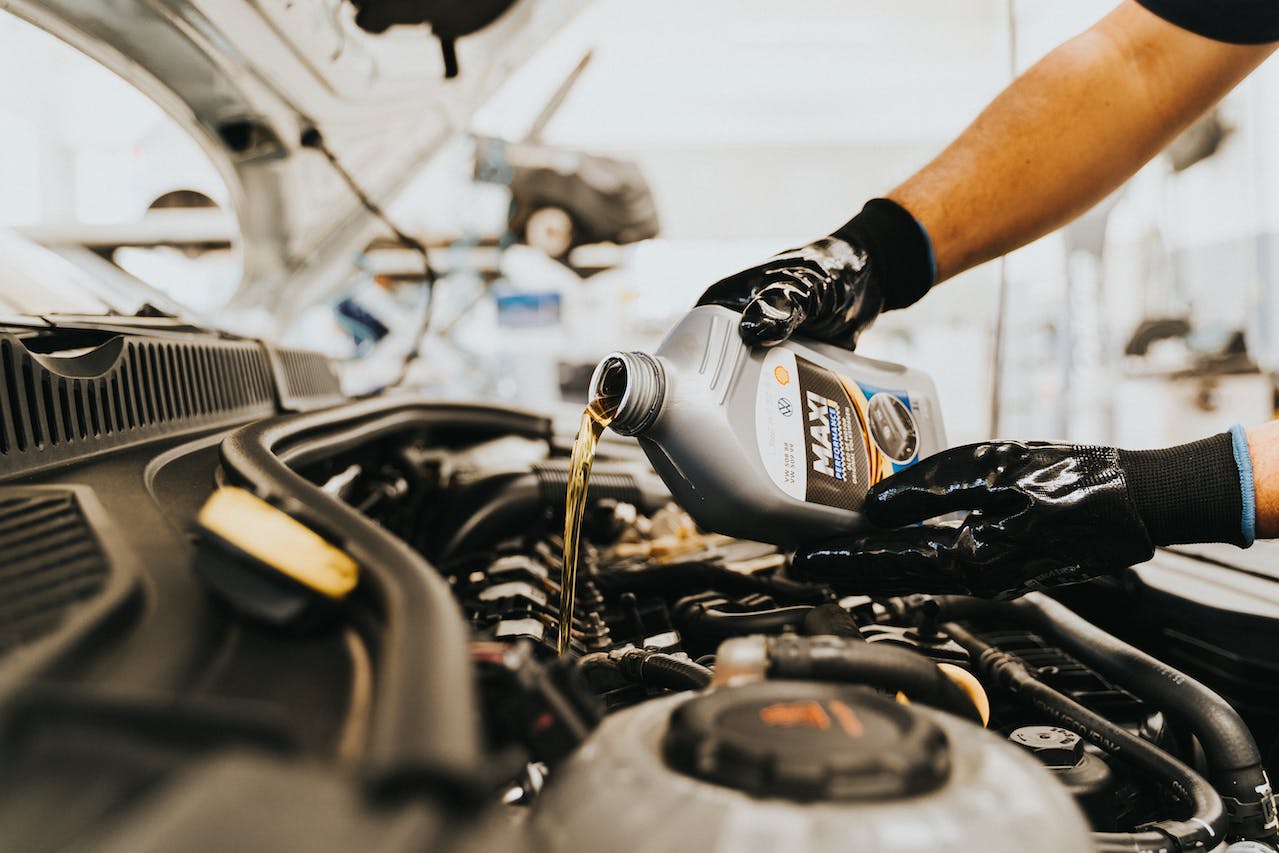It is fun to do your own chores, and changing your car’s engine oil is no exception. Unless your car’s oil drain plug is impossible to reach, you should save money by changing your oil in the comfort of your own home. It isn’t difficult – once you know the right steps to follow, it will hardly take 30 minutes. And you definitely don’t need to be a mechanic to do so. Here is the best oil for cars with over 200000 miles you can conveniently purchase online. Let’s get started with the guide.
Time Required: 1 hour if you are doing for the first time. 30 minutes on average.
Tools Required:
- Latex gloves
- Oil drain pan
- Funnel
- Oil filter wrench
- Wrench to remove drain plug (box-end or socket)
- Floor jack and jack stands or ramps (optional – depends on your garage’s ground clearance)
Materials Required:
- New oil filter
- Engine Oil
- A replacement drain plug washer (depending on application)
Following are the steps you need to follow to change your car’s oil:
Check the Type and Amount of Oil Needed
This one is the first and most important step before you go ahead and put whatever oil in your car that seems right to you. All the information, from choosing the right type and amount of oil to changing it, is written in your car’s manual – you should check with it. For example, a 2012 Ford Explorer requires 5.7 quarts of engine oil, so getting a 6qt container of engine oil would be the right choice here.
The second thing you need to determine and match is the oil’s viscosity to your engine. For example, the 2.0 liter Ford EcoBoost engine requires 5W-30 oil. If one doesn’t read the manual and instead put 5W-20 oil in this engine, then the performance might even get worse because this grade of oil is specified for the 3.5-liter V6 engine.
Get Together Your Essentials
Suppose you have got the right type of oil according to your car/engine, the next thing you would want to do is gather the essentials that include a new oil filter, wrenches, funnel, a drain pan, and other supplies. You may also need a floor jack to raise the car to access the drain plug. For this purpose, you should never use a flimsy floor jack that’s supplied with the car.
You can also make a funnel using an empty, dry water bottle by cutting its end off. If you are a DIYer, you won’t find this task difficult at all.
Warm-up Your Engine for 5 Minutes
You may know that oil can turn into one solid block or become thick when the ambient temperature is low. While your car’s engine oil doesn’t have this characteristic, it still has a tendency of settling down with metal particles and dirt in case your engine is cold. This is why you should crank up your engine and let it run for at least five minutes so the oil can become less viscous. Hence, the oil will be easily drained.
Once your car’s warmed up, don’t drain the oil immediately as it will still be very hot. Wait another five or ten minutes so the oil temperature can slightly decrease. This helps prevent any injuries related to oil burns. If your car has already been running for several hours, make sure to let it cool down for some time before getting under the engine and draining the oil right away.
Park Your Car on a Flat, Stable, and Even Terrain and Raise it
Once you have warmed up your car, park it on a flat, stable, and even surface. Ensure to put your car in Parking if it is an automatic one, or neutral if manual. Also, pull the handbrake or parking brake. Now, use a high-quality floor jack, preferably an alligator-type hydraulic, to raise your car. If you have a vehicle trestle, you should also use it to be on the safe side. Just don’t ever use a single jack alone because it is too risky.
Look Under Your Vehicle to Find the Drain Plug
The drain plug is a large plug that is located at the bottom of the engine under the oil pan. If you can’t see or access it, you will have to crawl under your car. Once you have raised it with the help of a jack, you will be able to see and access it easily.
Drain The Old Engine Oil
If your car is equipped with a splash guard, you will have to remove it first to gain access to the sump plug. The splash guard protects the underside of your car. Once you have removed it, the next thing you need to do is unscrew the sump plug with the help of a wrench. Put a pan or bowl of sufficient capacity under the drain plug, and the oil will flow straight into it. As a bonus, you should also clean the slump plug while you are already at it. In addition to this, you might also want to change the crush washer to help prevent any leaks.
Allow the oil to drain completely from your engine for several minutes before you screw the sump plug back in. Even if there is no more oil dripping from the drain plug, you may still want to wait a bit more to drain it thoroughly before putting fresh oil. Once done, you can screw the sump plug back and move to the next step.
Install the New Oil Filter
Whenever you change your car’s engine oil, you should also replace the oil filter. In addition to this, you can also change the O-rings to ensure there will be no leakage after you put engine oil. Moreover, before installing the O-ring, you should lubricate it with the fresh engine oil (not the one you got drained from the car). Lubricating O-ring ensures a perfect seal, hence a leak-free system.
Add New Engine Oil
Finally, this is the easiest step of them all. You should use a funnel to facilitate filling your engine with new oil; otherwise, you might end up spilling most of it on the engine. The oil plug is located under your bonnet, at the top of your engine. This area is marked with an oil sign. Before you start adding oil, you should already know the right amount of oil required. You can also have an idea of the level of oil you have already poured by using the dipstick. Make sure you don’t overfill the oil, or else it can cause problems in your car.
Once you have poured the right amount of oil in the engine, close and tighten the cap.
Start Your Car’s Engine and Let It Run for A Few Minutes
If you have filled your engine with the right amount of oil, you should run it for a couple of minutes so the brand new oil can circulate throughout your car’s engine, including the oil filter and the journals. While your car’s engine is running, ensure that there is no leakage – if you have followed all the above steps carefully, there won’t be any leaks.
However, if you spot any leakage, turn off the engine, allow it to cool down a bit, and then tighten those parts where you spotted the leakage.
Check The Engine Oil Level
Once you have allowed your car’s engine to run for a few minutes, turn it off and let it cool down for five minutes or so. Next, check the engine oil level using the dipstick. The dipstick should be covered with engine oil between MIN and MAX markings. Though some car manufacturers recommend that the oil level on the dipstick should be at the MAX, you should check with your owner’s manual to be sure.
Document The Oil Change
This is an optional but very important step in the whole process. Many people usually ignore or forget this part, but it is a good practice to document the oil change that you performed along with the mileage on your car’s odometer. This will allow you in the future to decide when the next oil change should be. Most vehicle manufacturers recommend that you get the oil and oil filter changed every 3,000 miles or 3-6 months (whichever comes first), but it depends on your usage and vehicle – so check with your owner’s manual.
Some Oil Changing Tips
- If your engine is cold, run it for a couple of minutes to warm the oil. If the engine is already too hot, let it cool down by waiting for at least 30 minutes. This will prevent any oil burns.
- Use the properly sized box-end wrench on the socket instead of an adjustable wrench or socket.
- Never work under a car that is supported/raised by a single jack only. To be on the safe side, always use jack stands.
- Never use a filter wrench to tighten the filter – you are better off with hand-tightening it.
- Don’t waste your old oil and oil filter. Recycle it yourself or give it to the recycling center near you.
- Use an old shirt or vest to open the drain plug as it might be hot to touch.
Final Words
Changing your car’s engine oil should not be hard at all for a person who likes to do his own work. On top of everything, doing this will help you save money that you spend on changing your car’s engine oil every three months or 3,000 miles.


